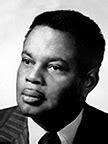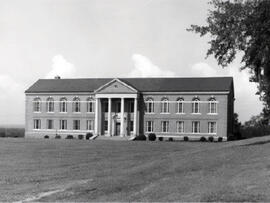This collection reflects the saved papers and artifacts of Dr. Benjamin Luther Perry, Jr., the sixth president of Florida Agricultural and Mechanical University (FAMU). Most of the collection is contemporaneous with Dr. Perry’s tenure as university president from 1968 to 1977. This collection contains speeches, administrative papers, correspondence, reports, news articles, photographs, conference journals, and more, focusing on Dr. Perry’s speeches and organizational involvement. His work as a university president included advocating for the continued existence of Historically Black Colleges and Universities in general and FAMU in particular, as well as many administrative and policy decisions regarding the development of university assessments and personnel procedures.
With Dr. Benjamin L. Perry, Jr., at the helm, the 1970s brought further growth to the University. FAMU experienced a decade of rapid transition when federal laws demanded a desegregated unitary system. Dr. Perry’s administration is credited with the preservation of FAMU’s autonomy. In 1971, FAMU was recognized as a full partner in Florida’s nine-university, public higher education system.
The program and academic areas within the institution were extended to include the Black Archives Research Center and Museum, established as a state repository for black history and culture; the Division of Sponsored Research; the program in medical sciences, in conjunction with FSU and the University of Florida; the development of the School of Architecture; a Naval ROTC unit; establishment of the cooperative programs in agriculture; and a degree-granting program in Afro-American Studies.
Enrollment at FAMU increased from 3,944 (1969) to 5,024 (1970). The university was reorganized into academic areas instead of departments. The physical plants were improved by the construction of the Women’s Complex (apartment type dormitory), Clifton Dyson Pharmacy Building, new poultry building and dairy cattle resting shed, and renovation of University Commons, Coleman Library, Tucker Hall, and the FAMU Hospital into the presently named, Foote-Hilyer Administration Center (FHAC).

